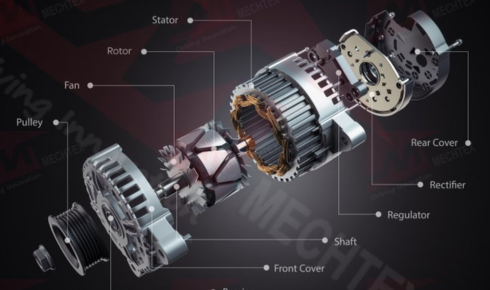In the world of modern electronics and robotics, bldc motors have emerged as a reliable and efficient solution for various applications. Brushless DC motors are widely used in robotics, drones, electric vehicles, and industrial machinery due to their high efficiency, durability, and low maintenance. Unlike traditional brushed motors, BLDC motors eliminate the need for brushes, reducing friction and wear, which improves overall performance and extends lifespan. Understanding the features of BLDC motors and factors affecting their cost can help students, hobbyists, and engineers make informed decisions for their projects.
BLDC motors operate using electronic commutation rather than mechanical brushes. This allows precise control of speed, torque, and direction, making them ideal for applications that require accuracy and reliability. They are known for smooth operation, low noise, and high energy efficiency, which is why they are increasingly popular in industrial automation, robotics, and even household appliances. For learners and hobbyists, BLDC motors provide a practical way to explore the principles of electric motors, control systems, and electronics.
One important consideration when selecting a BLDC motor is the bldc motor price. The cost varies depending on factors such as motor size, power rating, torque capacity, voltage rating, and brand. Higher-end motors with advanced features, such as built-in controllers or high torque for heavy-duty applications, tend to be more expensive. Conversely, smaller motors suitable for educational or hobby projects are more affordable and accessible. Understanding the price helps in planning budgets for school projects, robotics competitions, or industrial applications.
BLDC motors are often paired with controllers that regulate speed and direction. These controllers are essential for maintaining consistent performance and ensuring safety during operation. By integrating a BLDC motor with a controller, learners can explore advanced projects such as robotic arms, electric vehicles, or automated systems. These projects help develop skills in electronics, programming, and mechanical engineering, making BLDC motors a popular choice in STEM education.
Another advantage of BLDC motors is their durability and low maintenance. Since they lack brushes, there is minimal wear and tear, reducing the need for frequent replacements. This makes them cost-effective in the long run, even if the initial BLDC motor price is higher than traditional motors. Additionally, they provide better heat dissipation and can handle higher speeds, making them suitable for both hobby projects and professional applications.
For students and hobbyists, using BLDC motors offers a hands-on approach to learning about electric motors, electronic circuits, and control systems. They allow experimentation with different speed settings, torque requirements, and load handling. By building projects with BLDC motors, learners can observe real-world applications of physics and engineering principles, enhancing understanding and retention of concepts.
BLDC motors also play a critical role in promoting energy efficiency. Their high efficiency reduces power consumption, which is especially important in battery-operated devices like drones, electric scooters, and robotics. Learners can explore energy-saving techniques, motor optimization, and practical design solutions while experimenting with these motors. Understanding the cost-performance relationship helps in selecting the right motor for each specific project or application.
In conclusion, BLDC motors offer exceptional efficiency, durability, and precision, making them a preferred choice for robotics, automation, and modern electronic applications. Considering the BLDC motor price along with required specifications ensures the right balance between performance and budget. Whether for educational purposes, hobby projects, or industrial use, BLDC motors provide a practical, engaging, and innovative way to explore the world of electronics and mechanical systems.

